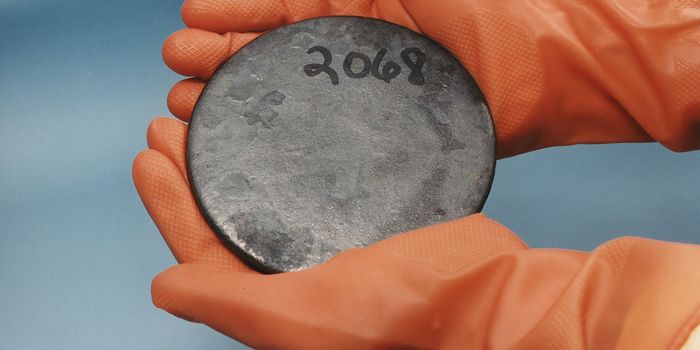This Invention Could Make Fuel Cell Cars Greener and Cheaper
Fuel cell vehicle and hydrogen charging station. Credit: FuelCellWorks
As the first generation of mass-produced hydrogen-powered fuel cell cars (otherwise known as fuel cell electric vehicles, or FCEV) are hitting the road, people finally get to see and drive these supposedly most futuristic vehicles. While FCEVs perform just as strongly as an internal combustion engine, their only emission is water. And they are just as quiet as a standard EV, but usually going farther on a single fuel fill-up versus a single full charge of most EVs.
The hydrogen revolution is not restricted to personal vehicles. Germany and French company Alstom have signed an agreement to build 14 hydrogen-powered emissions-free trains, called Coradia iLint, by 2021. These regional passenger trains can travel 1,000 kilometers (621 miles) on one full hydrogen tank, and can reach a maximum speed of up to 140 km/h (87 mph).
But the current hydrogen-powered transportation system has a big, often overlooked caveat. Currently, the majority (over 90%) of hydrogen production worldwide is produced from fossil fuels by steam reforming or partial oxidation of methane and coal gasification. Only a small portion is produced by other routes such as biomass gasification or electrolysis of water.
For example, in 2004 alone, 53 million metric tons of hydrogen was produced and consumed worldwide. So imagine how much carbon was freed from fossil fuels and released into air as carbon dioxide through the process of obtaining hydrogen, the so called “clean fuel”. Hydrogen energy is not really 'green' unless it is produced from renewable sources. Therefore many have been experimenting with methods that can produce hydrogen through carbon-free source.
A research team at the University of California Los Angeles (UCLA) have announced that they invented a device that can use solar energy to inexpensively and efficiently create and store energy, which could be used to power electronic devices, and to create hydrogen fuel for eco-friendly cars. The detail of their research is described in a paper in the journal Energy Storage Materials.
Typical hydrogen fuel cells work hand-in-hand with supercapacitors. A supercapacitor is a high-capacity capacitor with capacitance values much higher than other capacitors that bridge the gap between electrolytic capacitors and rechargeable batteries. Supercapacitors typically store 10 to 100 times more energy per unit volume or mass than electrolytic capacitors, can accept and deliver charge much faster than batteries, and tolerate many more charge and discharge cycles than rechargeable batteries.
The fuel cell-supercapacitor combo usually has two electrodes: one positive and one negative. The device developed at UCLA has a third electrode that acts as both a supercapacitor, which stores energy, and as a device for generating hydrogen using water electrolysis, a truly green method. The electricity is harvested by the solar cell, and can be stored in one of two ways: electrochemically in the supercapacitor or chemically as hydrogen.
Combining a supercapacitor and the water-splitting technology into a single unit is an advance similar to the first time a phone, web browser and camera were combined on a smartphone, said Richard the study's senior author and a UCLA distinguished professor of chemistry and biochemistry, and of materials science and engineering.
The device can also make hydrogen cars affordable for many more consumers because it produces hydrogen using nickel, iron and cobalt - elements that are much more abundant and less expensive than the platinum and other precious metals that are currently used to produce hydrogen fuel.
The researchers designed the electrodes at the nanoscale—thousands of times thinner than the thickness of a human hair—to ensure the greatest surface area would be exposed to water, which increases the amount of hydrogen the device can produce and stores more charge in the supercapacitor. Although the device the researchers made would fit in the palm of your hand, Kaner said it would be possible to make larger versions because the components are inexpensive.
How Hydrogen Fuel Is Made? Credit: Seeker/Discovery News
Source: phys.org









